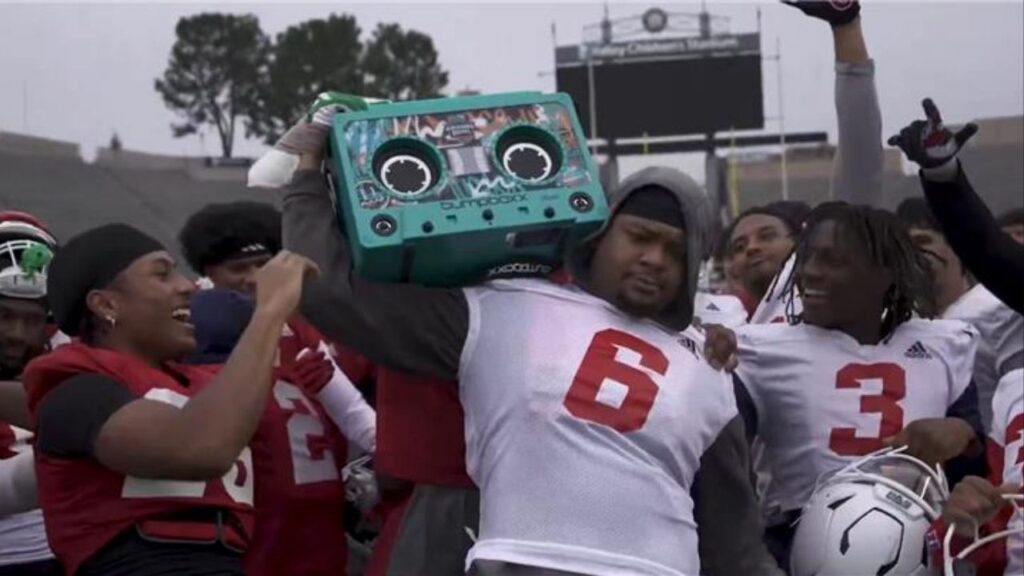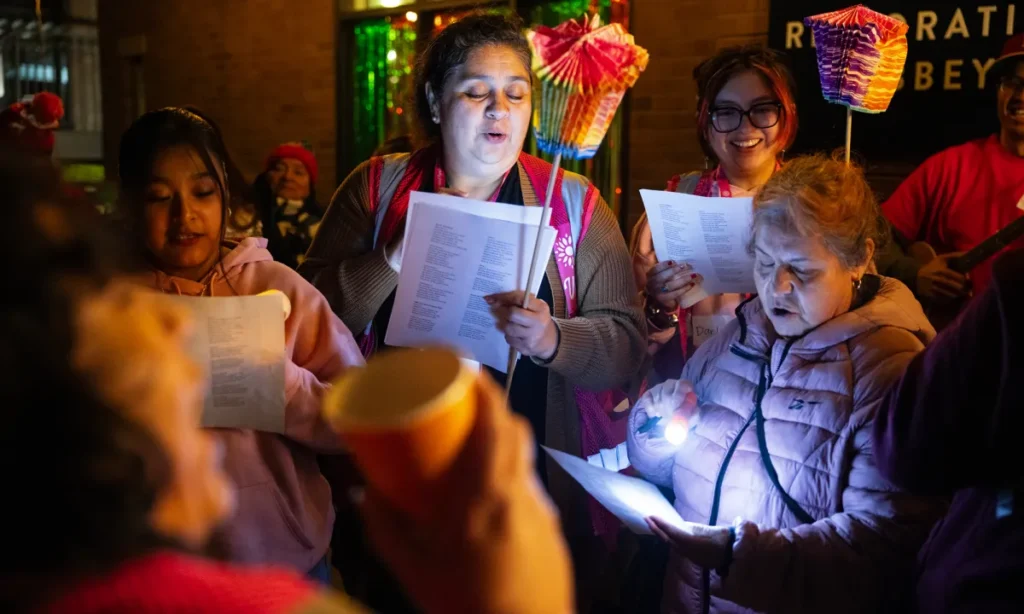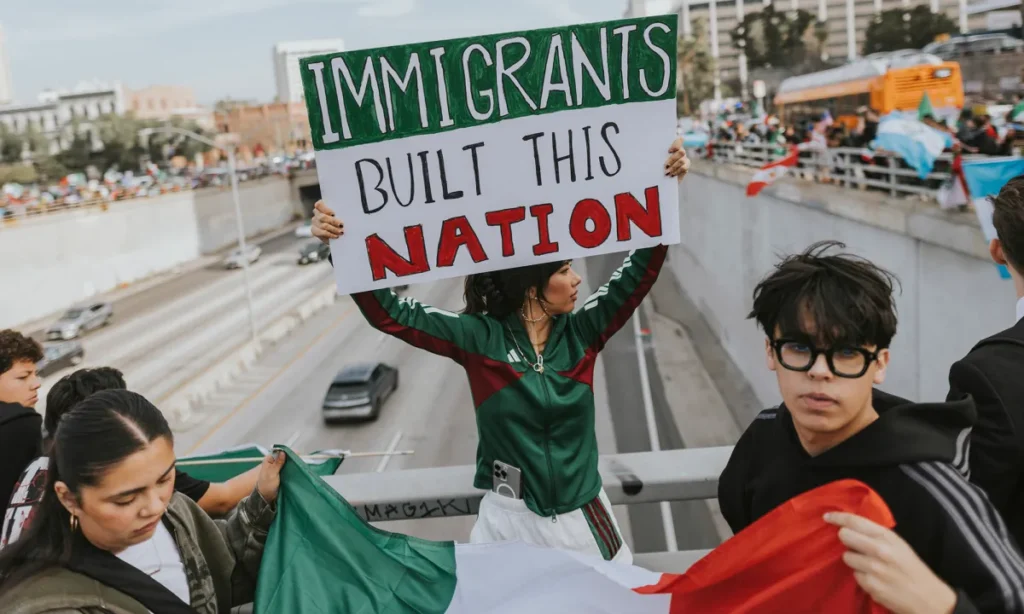A Ukrainian armored vehicle drives on the main road near the Russian border towards Russia’s Kursk region from Ukraine’s Sumy region, Aug. 12, 2024. President-elect Donald Trump may accelerate the timetable for a truce. Kyiv views guarantees against renewed aggression as crucial to any settlement. (David Guttenfelder/The New York Times)

- Ukraine's priority in peace talks is security guarantees, not territorial concessions, as it seeks protection from further Russian aggression.
- Ukrainian officials are pushing for NATO-style security guarantees and conventional weapons support, with a focus on ensuring cease-fires hold.
- Despite losing ground in the east, Ukraine continues to assert its territorial claims, with a growing acceptance of ceding land in exchange for peace.
Share
|
Getting your Trinity Audio player ready...
|
KYIV, Ukraine — Ukrainian officials have said for months that they would not cede territory occupied by Russia in any peace settlement. Now, as Ukraine contemplates an accelerated timetable for negotiations pushed by President-elect Donald Trump, it is putting at least as much importance on obtaining security guarantees as on where an eventual cease-fire line might fall.
With Ukrainian forces steadily losing ground in the east, two senior officials said that defending Ukraine’s interests in potential talks would hinge not on territorial boundaries, which are likely to be determined by the fighting, but on what assurances are in place to make a cease-fire hold.
“Talks should be based on guarantees,” said Roman Kostenko, chair of the Ukrainian Parliament’s Defense and Intelligence Committee. “For Ukraine, nothing is more important.”
A senior Ukrainian official, speaking on condition of anonymity to discuss sensitive negotiations, was more direct. “The territorial question is extremely important, but it’s still the second question,” the official said, “The first question is security guarantees.”
Russia Gained Control of 20% of Ukrainian Land
Ukraine sets its borders based on its 1991 declaration of independence. Russia has since gained control of about 20% of Ukrainian land, but Kyiv would not formally renounce its claim over any territory under Russian occupation, Kostenko said.
That appears to be the approach Ukraine is taking to justify any possible deal in which Russia would retain control of Ukrainian land. In October, President Volodymyr Zelenskyy, discussing a cease-fire, said: “Everyone understands that no matter what path we take, legally no one will recognize the occupied territories as belonging to other countries.”
Skepticism about Russian commitment to a settlement runs deep in Ukraine, which had a bitter experience with cease-fires in 2014 and 2015 after sparring with Russian-backed forces along the eastern border. The cease-fires did not prevent more fighting, which simmered for eight years until Russia’s full-scale invasion in 2022.
Officials in Kyiv have been seeking membership in the North Atlantic Treaty Organization as a guarantee against renewed attacks from Russia. Western officials have signaled they want Ukraine to join NATO, but not on any kind of accelerated timetable.
Officials in Kyiv have also said that a robust arsenal of conventional weapons — to be provided by the West — would enable Ukraine to quickly strike back, serving as a deterrent to a resumption of hostilities.
Security guarantees, and not land, figure to be the thorniest issue in any peace deal. When Ukraine and Russia held peace talks in 2022, Russia eventually balked at the proposed deal’s critical component: an arrangement binding other countries to come to Ukraine’s defense if it were ever attacked again.
Russia Doesn’t Want Ukraine in NATO
Russia has long said that it considers Ukrainian entry into NATO unacceptable. It has signaled that such a move would be a deal breaker for any cease-fire agreement, while also indicating it will want to keep control of the territory it has captured in Ukraine.
Discussions over a potential settlement have heated up since the election last week of Trump, who has vowed to press for immediate talks. That’s a shift from the Biden administration’s longtime position that the timing and terms of any settlement should be left to Ukraine. Trump has been openly skeptical about continuing U.S. aid to Ukraine and has said he can bring about an end to the war in one day — without saying how.
President Vladimir Putin of Russia has repeatedly tried to portray Ukraine as the intransigent party when it comes to peace talks, while hinting at settlement terms that are only favorable to him. Ukrainian and Western officials view his stance as a demand for capitulation.
An immediate issue for any cease-fire along the front is Ukraine’s occupation of parts of Kursk, in southwest Russia, which the Ukrainian military invaded in August. Kyiv sees the territory as a potential bargaining chip during talks, but in Moscow, Ukraine’s departure is widely seen as a prerequisite for beginning negotiations. U.S. officials say that some 50,000 Russian and North Korean troops have massed in Kursk in preparation for a counteroffensive to drive Ukraine from Russian land.
If Ukrainians are driven from Kursk, Russia could accept a cease-fire along the front line by next spring, Konstantin Zatulin, a lawmaker in Putin’s political party, said in an interview Monday. “Everything will be based on facts,” he said. “Everything we have is ours; everything Ukraine has is Ukraine’s.”
The senior Ukrainian official said Kyiv would want to ensure any cease-fire line would not hurt the country’s economic recovery after the war by, for example, leaving industrial areas too insecure for investment. The width of a demilitarized zone — a buffer area between the two armies — would also be a key consideration, the officials said.
Zelenskyy has been appealing for support in the United States and European nations for what he calls a “peace through strength” strategy that would shore up Ukraine’s army and potentially improve its position on the battlefield before talks commence.
But Ukraine’s plan is only one of several approaches, including a proposal by China and Brazil and another by Turkey that would address security for Black Sea shipping but could be expanded to include other issues.
Ukraine Is Quickly Losing Ground
For now, Ukraine is losing ground as quickly as at almost any time since the first days of the invasion. Russia has honed an effective if costly tactic of grinding forward through small infantry assaults, trading personnel for land. With too few soldiers, Ukraine has resorted to shuffling troops between hot spots on the front to prevent a collapse of the lines.
In its own plan, called the Peace Formula — widely seen as its starting point for negotiations — Ukraine has laid out 10 demands, including a full withdrawal, prosecution of war crimes and payment of reparations. At a summit in June, at which Russia was not present, those demands were not addressed.
But about 80 countries endorsed three other points in Ukraine’s plan: an exchange of prisoners of war and Russia’s release of civilian hostages; safeguarding nuclear sites such as the occupied Zaporizhzhia power plant; and guaranteeing free commercial shipping on the Black Sea.
Since then, Zelenskyy has softened Ukraine’s position, sending the foreign minister to China to welcome a Chinese role in talks and saying Russia could be invited to a future negotiating session on the Peace Formula.
Support for ceding territory in exchange for peace is rising among Ukrainians. A poll by the Kyiv International Institute of Sociology in October showed 32% of Ukrainians would support such an agreement, up from 19% last year.
But securing a favorable settlement for Ukraine while Russia is advancing would be extremely difficult, said Andriy Zagorodnyuk, a Ukrainian former minister of defense. Russian negotiators would be unlikely to settle only for territory their army had already taken.
“Whoever is in a winning position sets the terms,” he said. “It is true for governments or businesses.”
–
This article originally appeared in The New York Times.
By Andrew E. Kramer/David Guttenfelder
c. 2024 The New York Times Company



















